The world is becoming more interconnected, and smart applications are changing how people face daily lives — intelligent home appliances and smart home security applications create opportunities for more efficient living. Hence arises the idea of smart cities — creating efficiency using data and technology.
The ideas of “Smart Cities” are nothing new — they have been around for a while now as the future of urbanism. POSCO has been tapping this relatively uncharted territory through its vision for ‘Mega City.’ Still, crucial questions remain: what exactly are smart cities? And how would smart cities transform the landscape of the steel industry?
Asian Steel Watch, the biannual English journal specialized in the Asian steel industry, can provide insights into these questions. ASW vol. 7 features an in-depth study that addresses everything from the very definition of smart cities to how smart cities are helping to address urban issues and create new market opportunities. POSCO Newsroom reports:
l Why Smart Cities?
Urbanization has been progressing rapidly worldwide. The number of megacities with more than 10 million inhabitants is projected to rise from the 14 noted in 1995 to 46 by 2035. Increasing numbers of people are moving from rural to urban areas. The global share of the urban population is expected to rise to 62% by 2035, up from 45% in 1995.
Massive centralized cities are advantageous in terms of economic efficiency and effectiveness since production, consumption, education, and cultural development can all take place within a single area. For this reason, urbanization has been a natural response in many industrialized countries as a means to increase returns from investment and for sourcing talent. However, the rise of mega-cities and increasing population density have resulted in several threats to the quality of life of city dwellers.
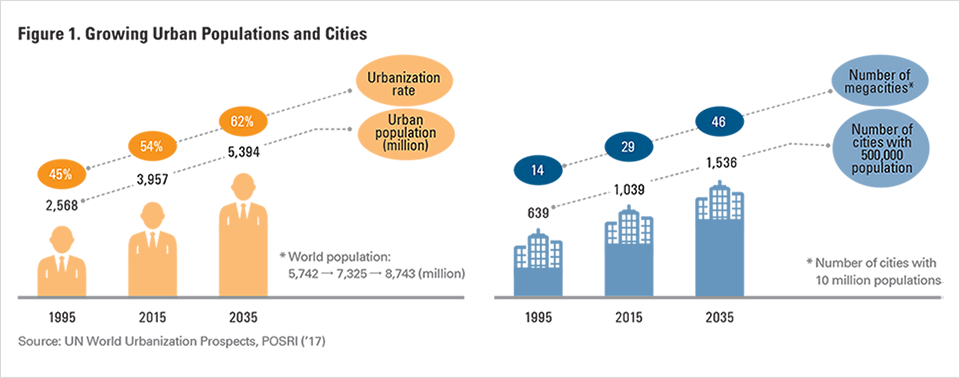
Ironically, the industrial complexes, high-rise buildings, and transport infrastructure that were intended to increase public convenience have triggered several issues such as excessive energy consumption, environmental pollution, public insecurity, and income disparities. This in turn has threatened the quality of life of urban dwellers and diminished the sustainability of cities. Smart cities aim to address some of the issues stemming from rapid urbanization and high population density by using scientific and information technology to forge a more sustainable urban environment.
l Development of Smart Cities
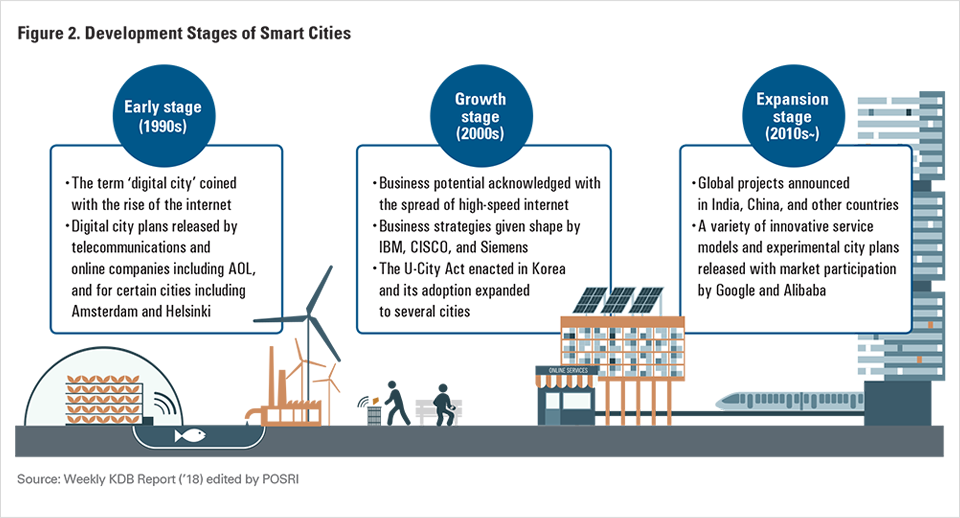
The concept of smart cities emerged in the mid-1990s as the internet and information infrastructure became widespread. America Online (AOL) first suggested the concept of a smart city in which services are provided through a network. With the advent of the internet, telecommunications companies began offering new service models and testing pilot projects. The notion was given increasing attention when a series of smart city plans was formulated for megacities, including Amsterdam Digital City in 1993, Helsinki Arena 2000 in 1996, and Tokyo Smart City in 1998.
Smart cities began to spread during the 2000s when their commercial value was recognized. With the expanding popularity of the internet, various projects were planned in Europe and the US. Following the announcement of IBM’s Smarter Planet strategy, global companies including Cisco and Siemens actively entered the smart city field, which began to be regarded as an industry. In South Korea, the u-City concept was introduced in 2003. The Ubiquitous Cities Act was legislated in 2008 and applied to several new cities, including Hwasung and Dongtan.
After 2010, major Asian cities, including some in China and India, released hundreds of smart city plans and global smart city projects gained momentum. With the rise of the Fourth Industrial Revolution and related technologies such as AI, IoT, and big data, bold government policies and corporate innovations are on the rise, exemplified by Google’s Sidewalk Labs in Toronto and Alibaba’s City Brain model in Hangzhou. A smart city can be defined by its purpose or its means. So far, ‘smart city’ has been generally understood according to its purpose. As multiple definitions were released by diverse organizations and institutions, there has been some confusion surrounding the concept of a smart city. According to a report by the al Revolution and related technologies such as AI, IoT, and big data, bold government policies and corporate innovations are on the rise, exemplified by Google’s Sidewalk Labs in Toronto and Alibaba’s City Brain model in Hangzhou.
l What Is a Smart City?
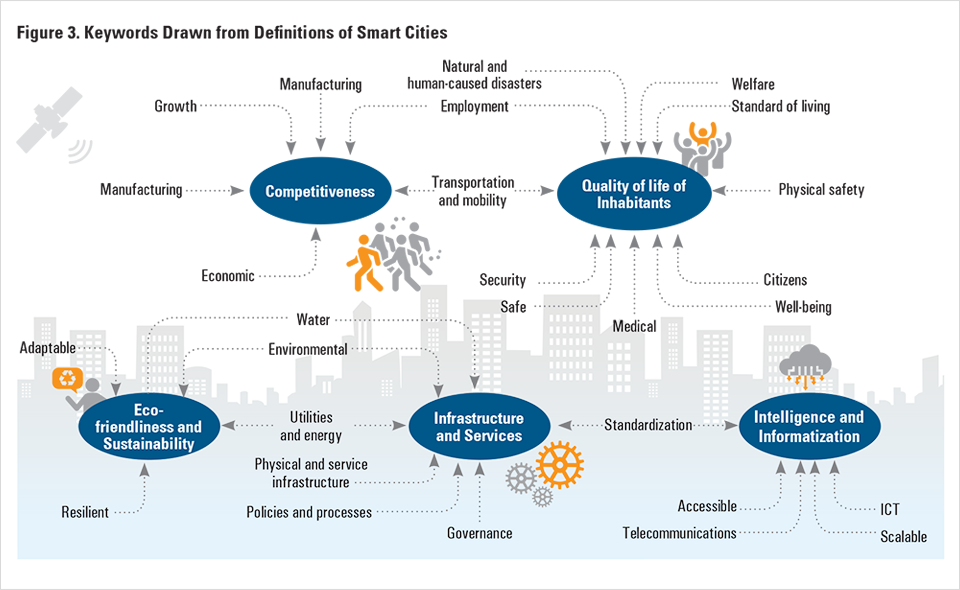
A smart city can be defined by its purpose or its means. So far, ‘smart city’ has been generally understood according to its purpose. As multiple definitions were released by diverse organizations and institutions, there has been some confusion surrounding the concept of a smart city. According to a report by the International Telecommunication Union (ITU) in 2014, there were 116 definitions of a smart city. Five keywords can be extracted from these various definitions, however: 1) competitiveness; 2) intelligence and informatization; 3) eco-friendliness and sustainability; 4) quality of life of inhabitants; and 5) infrastructure and services. However, some argue that defining a smart city according to its purpose is not helpful for solving urban problems due to the differences in their social, cultural, and industrial backgrounds.
For this reason, a new concept of a ‘city as a platform’ has been gaining ground, meaning that cities should serve as a means or platform for troubleshooting. The concept of a ‘smart city as a means’ relates that customized solutions can be created to address urban issues economically and effectively by activating the upper layers of data and service in a structure consisting of infrastructure, data, and service layers, as seen in Figure 4. Many cities and local governments have selected low-cost and high-efficiency methods based on software and data to ensure sustainable city management. Through a smart city competition open to local residents, they collect ideas to address social issues, verify the outcomes of pilot projects, and spread them to other cities.
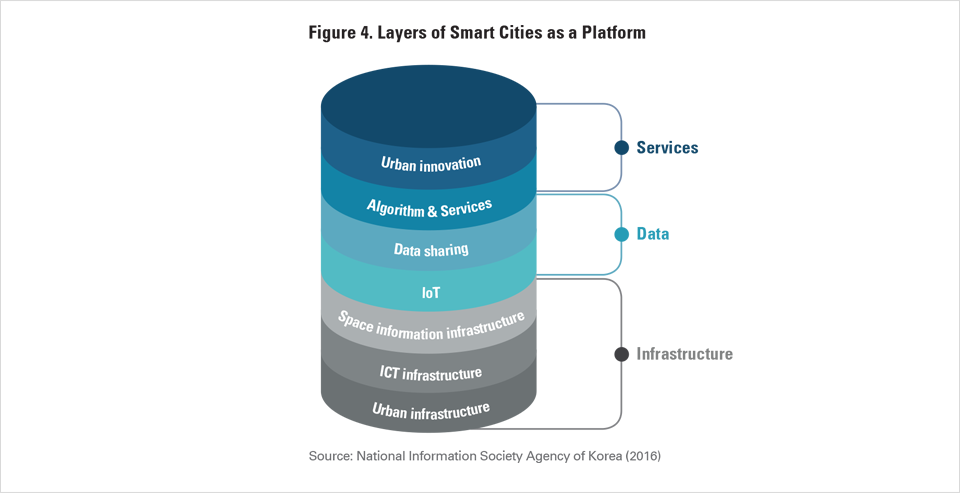
l Differences in Smart Cities by Region and Major Keywords
Smart city projects first emerged in advanced nations, including in North America and Europe, but are now rapidly spreading to developing nations. The goals and implementation schemes for smart cities vary by region. Developing nations build infrastructure and new cities using massive infusions of public funds for the purpose of the urban development required for establishing industrial infrastructure and achieving economic growth. In contrast, advanced nations generally aim to address urban issues through ICT, including IoT and big data, by making existing infrastructure intelligent and pursuing technological innovation and open data.
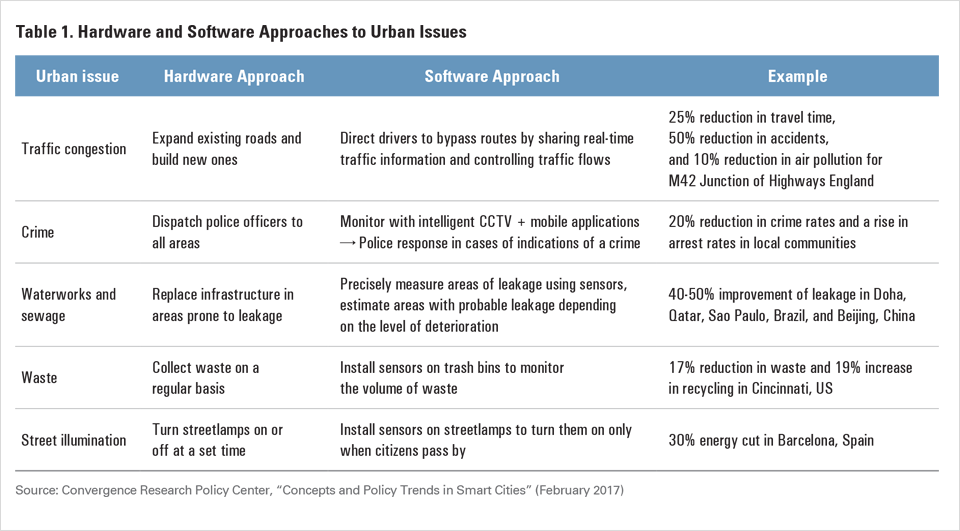
There is one common keyword shared by all types of smart city projects: energy efficiency. Energy efficiency accounts for 36% of stated goals and new urban development accounts for 19% of the goals of smart city projects currently underway across major cities. Energy efficiency is relevant in both advanced and developing countries, while new urban development is generally considered a priority in developing countries.
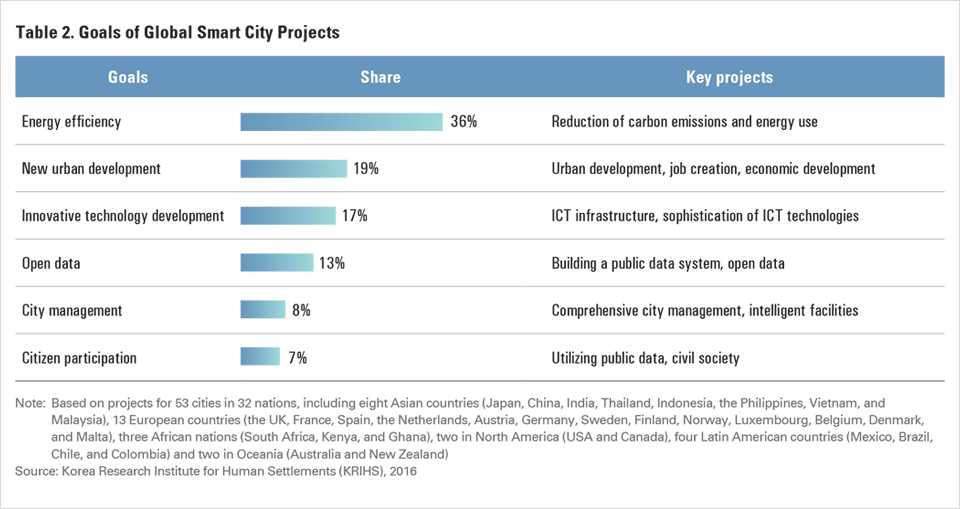
In the EU and North America, the key agenda is the shift to a low-carbon economy that can help to address climate change. The related goals include making cities more energy efficient and addressing urban issues through innovative technologies and open data. Ideas for solving urban problems have been collected through smart city competitions sponsored by public-private partnerships or with private funds. Pilot projects can be verified through living labs and the outcomes gradually applied. Projects are generally conducted by local governments while central governments provide R&D resources for technological innovation.
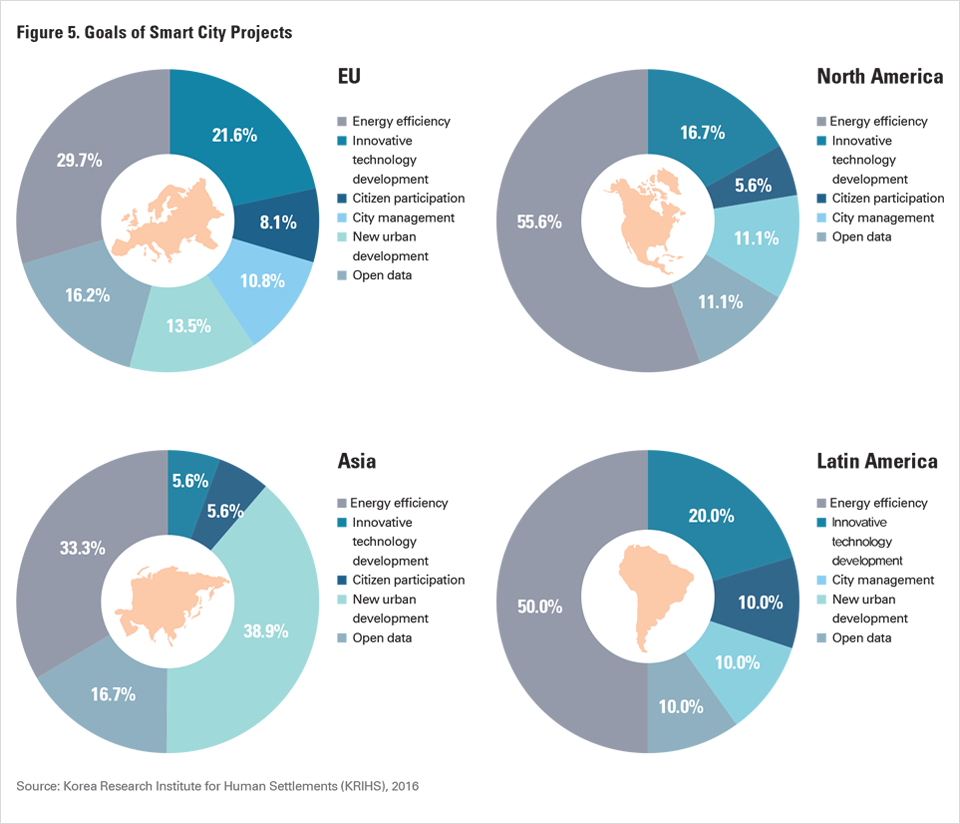
However, Asian countries with lower levels of industrialization than advanced countries generally pursue new urban development projects. These projects are commonly large-scale projects to build industrial complexes and fuel urban development while supplementing insufficient resources. Rather than the mitigation of climate change being pursued in the EU and North America, Asian projects are mainly focused on industrial infrastructure to enhance urban competitiveness and bolster the local economy. These urban development projects are led by local governments in collaboration with foreign governments and corporations in an effort to attract foreign investment and technology transfers.
Just like in the cases from the EU and North America, Latin American projects are pursuing energy efficiency, innovative technology, and open data to resolve urban issues. This stems from their early westernization leading to an urban structure where more than 80% of people live in cities. The smart city agenda for these countries consequently includes addressing the heavy concentration of people into large cities and the resulting issues such as public insecurity, traffic jams, and obsolete infrastructure. Diverse smart city projects are underway in Latin America, including in Brazil and Mexico.
l Smart City Policies and Implementation by Country
Many countries and local governments are implementing a variety of support measures for smart cities in an effort to boost competitiveness and improve the quality of life of urban dwellers. India and China are encouraging smart city projects as a means to refurbish national infrastructure and enhance urban competitiveness.
[The diverse efforts being made to support smart cities will change people’s lives, the type of industries, and the value chains for related industries. The source of added value is shifting from hardware to software under this transformation.
[As business models rapidly evolve with the rise of smart cities, the steel industry must think seriously about how the future will be unfold.]
In 2015, the government of India announced its Smart Cities Mission budgeted at INR 480 billion, which aims to develop 100 smart cities through 2022: establishing nine satellite cities with populations of over 4 million; turning 44 cities with populations of 1 to 4 million into smart cities; and establishing 20 small cities with populations less than 1 million. By connecting this mission to the country’s industrial master plan, India is endeavoring to improve industrial competitiveness and sophisticate its infrastructure.
The Chinese central government has been implementing massive smart city projects since 2013. Under the 12th Five-Year Economic Development Plan (2011-2015), the central government announced its intention to invest RMB 300 billion in establishing 320 smart cities by 2015 in the first phase of the project. Ninety pilot cities were selected in January 2013 and 103 more in August 2013. It expanded the existing smart city plan by 2017 with a combined investment reaching RMB 2 trillion in 2025. It is worth noting that China’s smart city projects are not simply about the sophistication of urban infrastructure. They also aim to increase the share of application and utilization of new technologies, including big data, IoT, and cloud computing in connection with the ‘Internet Plus’ strategy.
South Korea is also working on smart city projects through public-private collaborations. Recognizing smart cities as one of the enablers of the Fourth Industrial Revolution, the country has created a Special Subcommittee on Smart Cities under the Presidential Committee on the Fourth Industrial Revolution. In 2018, the Act on the Promotion of Smart City Development and Industry was legislated to support the industrialization of smart cities. Busan and Sejong City were selected as pilot cities for new technologies in autonomous cars, renewable energy, and block chains, as well as to provide incubators for new services.
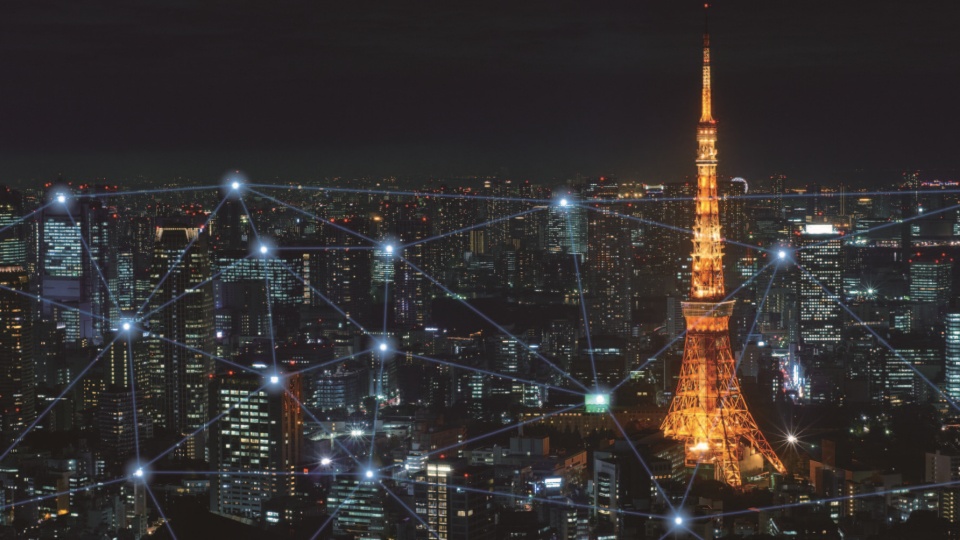
Meanwhile, US and EU smart city projects are being led by local governments rather than central institutions. Central governments there fund a variety of R&D projects to develop and apply innovative technologies for the realization of smart cities, while local governments select prospective smart cities and formulate relevant strategies. The EU set up the European Innovation Partnership on Smart Cities and Communities (EIPECC) in 2011 in an effort to spread the smart city concept across Europe. In 2013, it announced strategic plans for implementing smart city projects and funded 350 projects conducted by 2,500 partners from the EU-32. In the US, the Obama administration released the US Smart Cities Initiative in 2015 with funding of USD 160 million for R&D projects on 25 new energy and environmental technologies.
As illustrated in the cases of these countries, smart city projects have been implemented in a variety of manners suited to the respective countries’ social and cultural backgrounds and level of industrial development. Both the perception and role of smart cities are rapidly changing, too. Their role is expanding from being simply a means to improve the convenience of citizens to providing a test bed that inspires the emergence of new and disruptive business models.
Both the central government-led smart city projects in South Korea, China, and Singapore and the local government-led projects in the USA, Canada, and Germany are designed to promote the emergence of experimental services based on the Fourth Industrial Revolution, such as AI, AR/VR, blockchain, and IoT, and entail complex policy requirements for technological development, start-ups, and job creation. This means that these projects are not just being managed by teams focused on urban infrastructure, but by diverse teams specialized in technology, industry, and human resources, as well as by councils featuring representatives of civic, academic, and research institute perspectives.
l Development Direction of and Market Opportunities for Smart Cities
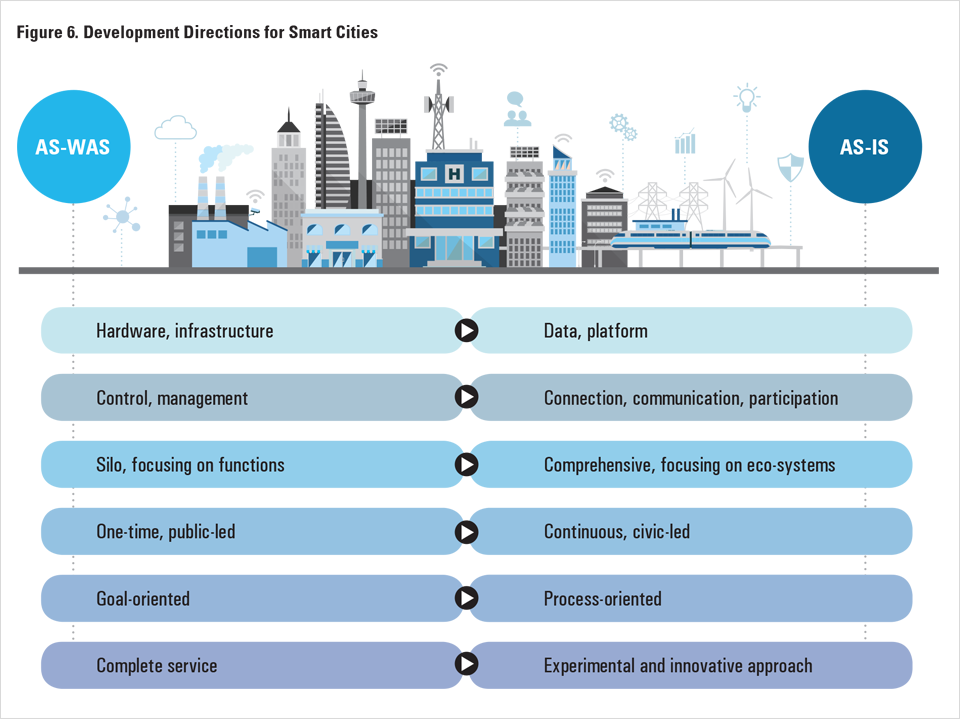
Smart cities originated in the digital cities that emerged with the rise of the internet in the 1990s. After a lengthy discussion of smart cities over the last two decades, diverse projects are underway across the globe.
However, these efforts are mostly one-time projects for the purpose of overseeing urban infrastructure more efficiently and improving the management of disasters, safety, parks, and traffic. Such projects have been operated as silos with independent functions: the public sector places orders, companies take the orders and build systems, and citizens make use of the resulting services.
In contrast, recent projects have been implemented through alliances featuring citizens, research institutes, and corporations aiming to create a service model that ensures continuous evolution and development. A black-or-white approach in which the public sector must become the providers of services and the citizens become the receivers must be avoided. Instead, the public sector should participate in creating a platform-based ecosystem and serve as mediators that coordinate any conflicts of interests. They should also operate as facilitators in an ecosystem that utilizes public funds to encourage citizens to undertake challenges and assist in the creation of new business models. Through these experiments, many companies will continue to develop business models and enrich the ecosystem.
This evolution entails a shift in market opportunities in smart cities.
From the perspective of traditional industry, market opportunities in smart cities lie in the construction of urban infrastructure, such as urban development and base infrastructure projects. In terms of market size, public infrastructure, industrial complexes, and residential buildings still account for the lion’s share of the construction market.
It is now time to move on from hardware and take a fresh new approach to emerging opportunities. In the automotive industry, various experiments are being tested, resulting in new business models for electric and autonomous cars. In addition, the energy industry is transforming itself from a massive processing industry into a platform industry with distributed generation.
Future cities will not remain merely an aggregate of hardware comprised of concrete and steel, but a fusion of new and disruptive service models based on infrastructure. In coming years, value will be created not by hardware, but by the software within it. This is also true for the construction and steel industries. Selling buildings or steel is not enough to seize the major opportunities within the smart city market. Related changes are underway. The construction industry is shifting its business model from the one-time construction of infrastructure to its operation and management. When combined with AI, IoT, and other emerging technologies, this will be expanded to more diverse fields and formats.
The steel industry is in the same boat. E-commerce took off just a few years ago, but it is now taking over. Such a change goes beyond the expansion of offline transactions into online distribution channels. Taking into account the characteristics of e-commerce platforms on which various stakeholders interact, steel e-commerce will be developed from steel transactions into a new business model blending finance, logistics, and other manufacturing. This transformation will be connected to the new services and markets sparked by smart cities, eventually expanding the field for the steel industry.
Smart cities are the future of industry. The diverse efforts being made to support smart cities will change people’s lives, the type of industries, and the value chains for related industries. The source of added value is shifting from hardware to software under this transformation. As business models rapidly evolve with the rise of smart cities, the steel industry must think seriously about how the future will unfold.
* This article has been reproduced from Asian Steel Watch, a bi-annual English journal specialized in the Asian steel industry. The original version Vol. 7 (2019.08) can be accessed and downloaded directly from POSRI’s website here.
